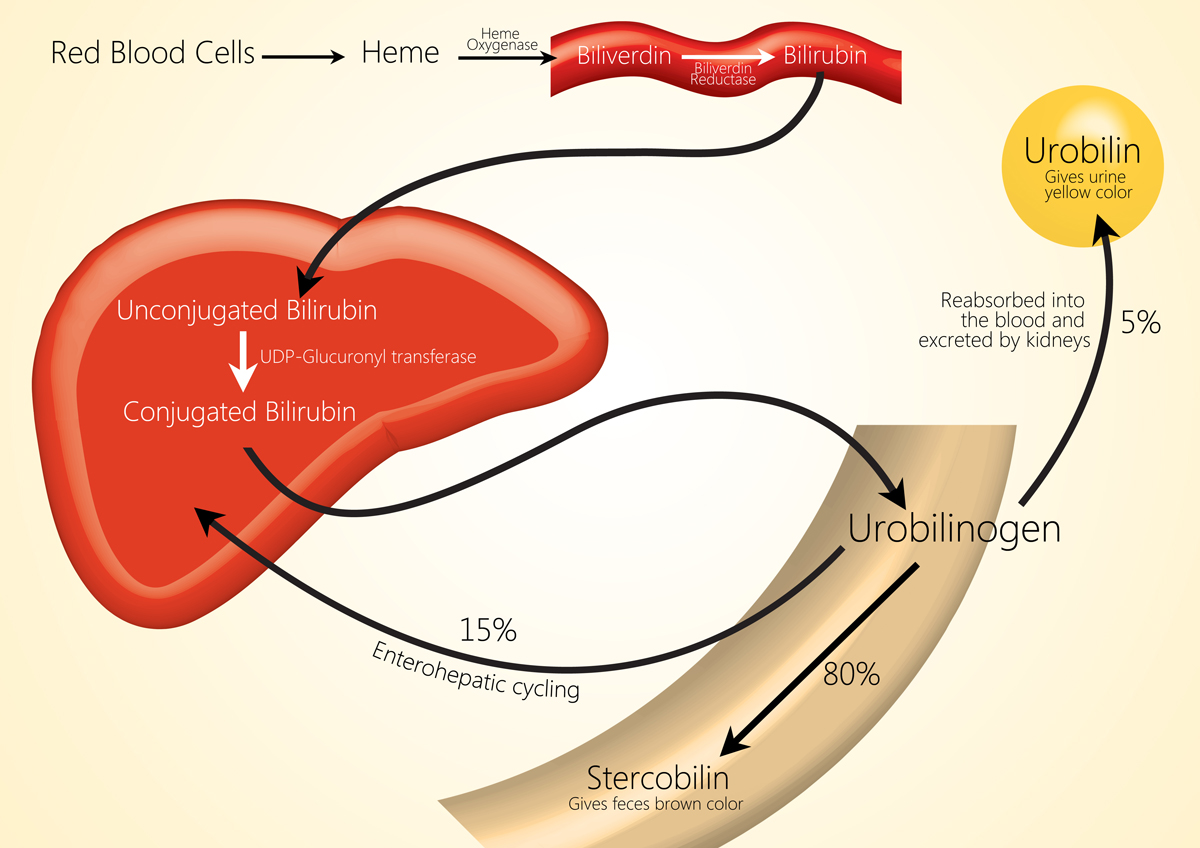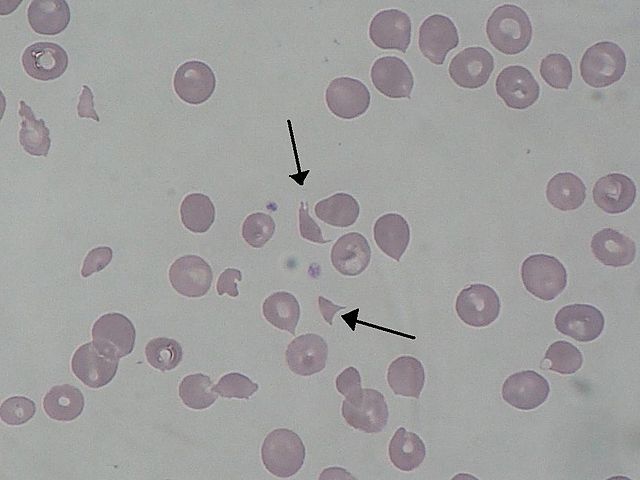WBR0659: Difference between revisions
Rim Halaby (talk | contribs) No edit summary |
Rim Halaby (talk | contribs) No edit summary |
||
| Line 20: | Line 20: | ||
|MainCategory=Pathophysiology, Physiology | |MainCategory=Pathophysiology, Physiology | ||
|SubCategory=Gastrointestinal | |SubCategory=Gastrointestinal | ||
|Prompt=A | |Prompt=A 21 year old man is admitted to the hospital for dizziness, shortness of breath, and jaundice several hours after he took 2 tablets of aspirin. The patient explains that this is the first time he has such an episode and that he has only been to the hospital once before for severe anemia. The patient also reports family history of jaundice. Work-up reveals a hemoglobin of 6.7 g/dL with blood smear shown below. Which of the following patterns would you expect in this patient? | ||
[[Image:WBRjaundice.jpg|550px]] | |||
| Line 27: | Line 30: | ||
The patient's presentation is typical for hemolytic anemia in the context of glucose-6-phosphate dehydrogenase (G6PD) deficiency. G6PD is an enzyme catalyzing the rate limiting step of the pentose phosphate pathway. It transforms glucose-6-phosphate to 6-phosphogluconolactone while restoring NADPH needed to reduce glutathione. In patients with G6PD deficiency, NADPH cannot be restored in RBCs leading to glutathione depletion and susceptibility of RBCs to oxidative damage brought on by drugs and other substances notably fava beans (hence the name favism). Hemolysis in general leads to elevation in indirect unconjugated bilirubin which is not very water soluble. This fact is important since it explains the absence of bilirubin in the urine as water insoluble substances cannot be excreted by the kidneys. In parallel, conjugation of the excess indirect bilirubin occurs in the liver leading to increase excretion and a secondary increase in fecal stercobilin. Urine urobilinogen is an indicator of bile reabsortption, thus as bile excretion increases, urobilinogen increases as well. | |||
Learning objective: | Learning objective: Hemolytic jaundice is characterized by indirect (unconjugated) hyperbilirubinemia with absent urinary bilirubin and increase in urobilinogen. | ||
References: | References: | ||
Beutler E. G6PD: population genetics and clinical manifestations. Blood Rev. 1996;10(1):45-52. | |||
Le T, Bhushan V. First Aid for the USMLE Step 1 2014. McGraw-Hill Medical; 2014. | Le T, Bhushan V. First Aid for the USMLE Step 1 2014. McGraw-Hill Medical; 2014. | ||
| Line 49: | Line 51: | ||
|AnswerEExp=This pattern is typical of hemolytic type jaundice. | |AnswerEExp=This pattern is typical of hemolytic type jaundice. | ||
|RightAnswer=B | |RightAnswer=B | ||
|WBRKeyword= | |WBRKeyword=Hemolytic jaundice, Bilirubin, unconjugated hyperbilirubinemia | ||
|Approved=No | |Approved=No | ||
}} | }} | ||
Revision as of 07:52, 24 October 2013
| Author | [[PageAuthor::Rim Halaby, M.D. [1]]] |
|---|---|
| Exam Type | ExamType::USMLE Step 1 |
| Main Category | MainCategory::Pathophysiology, MainCategory::Physiology |
| Sub Category | SubCategory::Gastrointestinal |
| Prompt | [[Prompt::A 21 year old man is admitted to the hospital for dizziness, shortness of breath, and jaundice several hours after he took 2 tablets of aspirin. The patient explains that this is the first time he has such an episode and that he has only been to the hospital once before for severe anemia. The patient also reports family history of jaundice. Work-up reveals a hemoglobin of 6.7 g/dL with blood smear shown below. Which of the following patterns would you expect in this patient? |
| Answer A | AnswerA::A |
| Answer A Explanation | AnswerAExp::This pattern is usually not seen. |
| Answer B | AnswerB::B |
| Answer B Explanation | AnswerBExp::This pattern is typical of obstructive jaundice. |
| Answer C | AnswerC::C |
| Answer C Explanation | AnswerCExp::This pattern is usually not seen. |
| Answer D | AnswerD::D |
| Answer D Explanation | AnswerDExp::This pattern is usually not seen. |
| Answer E | AnswerE::E |
| Answer E Explanation | AnswerEExp::This pattern is typical of hemolytic type jaundice. |
| Right Answer | RightAnswer::B |
| Explanation | [[Explanation::
Learning objective: Hemolytic jaundice is characterized by indirect (unconjugated) hyperbilirubinemia with absent urinary bilirubin and increase in urobilinogen.
Beutler E. G6PD: population genetics and clinical manifestations. Blood Rev. 1996;10(1):45-52. Le T, Bhushan V. First Aid for the USMLE Step 1 2014. McGraw-Hill Medical; 2014. |
| Approved | Approved::No |
| Keyword | WBRKeyword::Hemolytic jaundice, WBRKeyword::Bilirubin, WBRKeyword::unconjugated hyperbilirubinemia |
| Linked Question | Linked:: |
| Order in Linked Questions | LinkedOrder:: |

